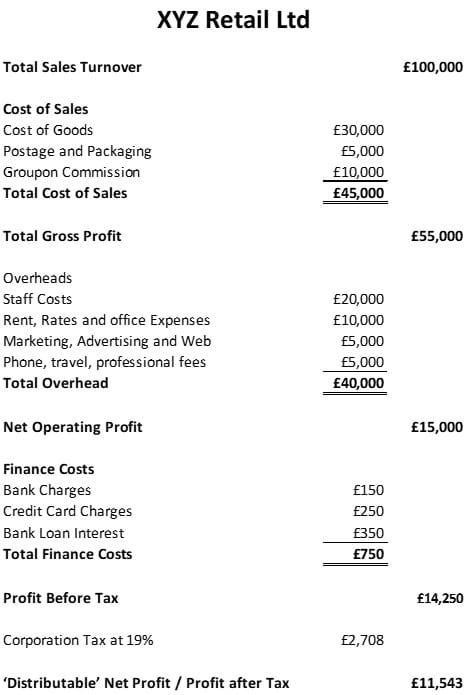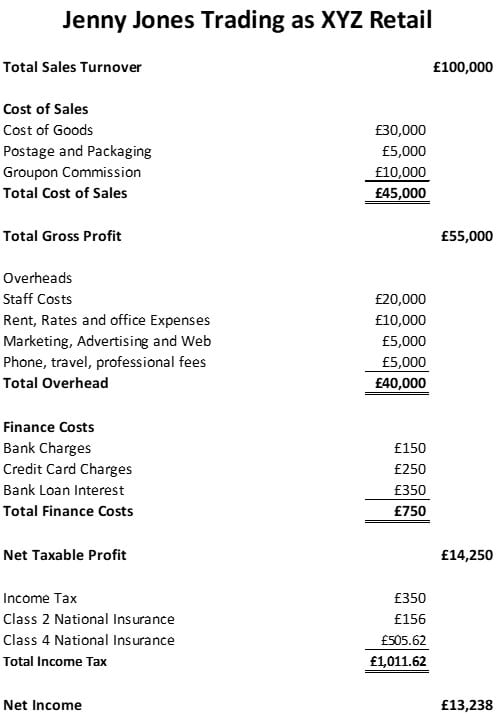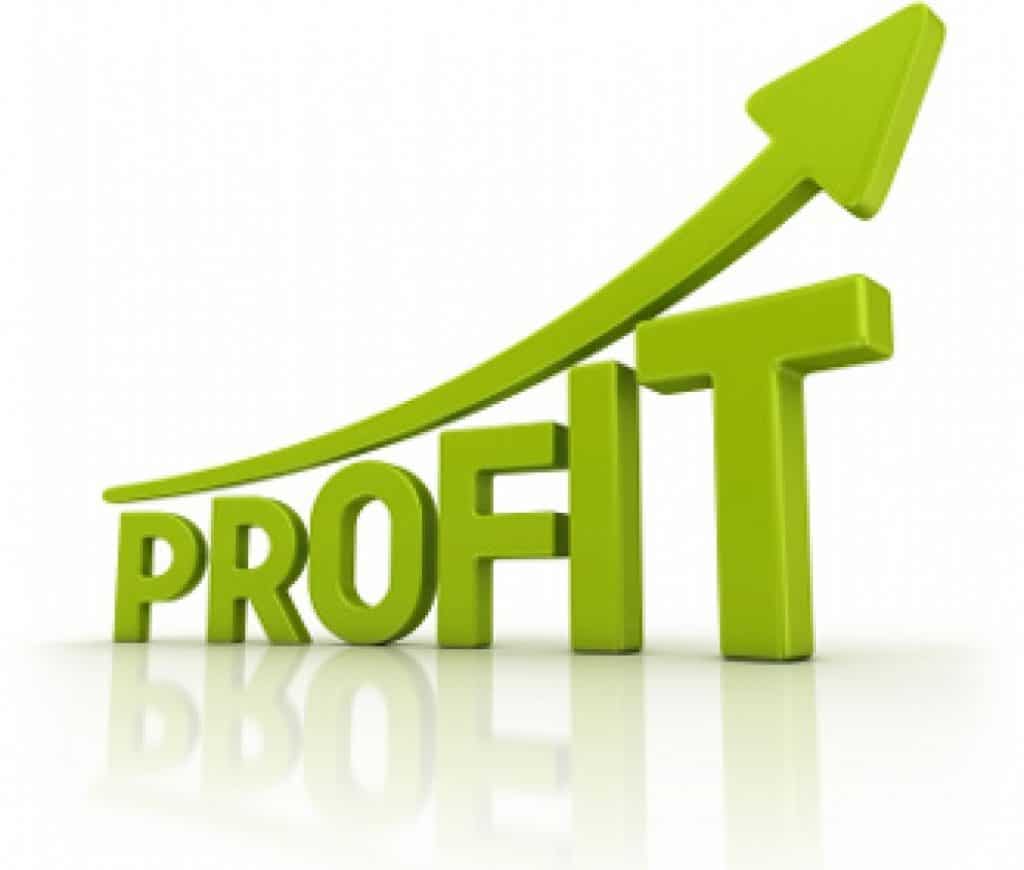What exactly is profit and why does it matter? Or what’s the difference between net and gross profit and all the other related terms we hear? If this is a question you’ve ever asked or been asked, then hopefully the article below lays out the answers to these questions in an easy to understand way…
Profit in its simplest terms is what’s left from your turnover (see article on What is Turnover here) once you have deducted all the associated costs with that sale.
Every business should be focussed on making profit (while never neglecting the importance of cash), as it’s one of the key indicators of business performance and success.
But unfortunately, it’s not always quite as simple as that as there are multiple levels of profit. You will hear all sorts of profit related terms such as Gross Profit (GP), Net Profit (NP), Profit After Tax (PAT), Profit Before Tax (PBT), Net Operating Profit (NOP) and Net Taxable (NTP) Profit.
As if it wasn’t confusing enough, different countries (and therefore businesses) tend to use similar terms to mean something different. So if you’re unsure, do check!
You will also sometimes hear profit referred to as ‘Earnings’, and terms or more often acronyms relating to Earnings such as EBIT (Earnings Before Interest and Tax) and EBITDA (Earnings Before Interest, Tax, Depreciation and Amortisation).
And then there is Contribution, and Net Contribution, which in their simplest terms relate to gross profit of a specific unit / line / product / service of your business.
So let’s start at the top, and in this article we will keep it really simple and just explore the terms Gross Profit and Net (Operating) Profit, as these are the most relevant and important for small business owners to understand, measure and manage.
What is Gross Profit?
Gross profit is what is left over from your turnover (or sales income) once all your direct costs are deducted.
Direct costs are anything which relate directly to the manufacture or sale of your product and service. Or put another way, costs which fluctuate dependent on your level of sales – the more you sell, the higher your direct costs are likely to be.
So in a manufacturing business for example, direct costs may include not only the cost of goods associated with building a specific product, but also the cost of labour involved.
If you run a retail or distribution business, direct costs will clearly include the cost of the products you are selling on, but may also include some product specific marketing costs, such as a PPC campaign or an association with a voucher company such as Groupon or Wowcher.
Restaurants who work with Just Eat or Uber Eats may consider those costs as direct costs, and if they use casual workers who only come in during busier times, then these associated costs could also be considered as direct costs.
Service companies do tend to have less direct costs than other types of businesses, but again, and particularly more recently, many service companies are turning to freelancers to cover work during particularly busy times – if you are only paying them for the specific work or projects they complete for you, then they are direct costs.
So, the simple formula for calculating your Gross Profit is:
Turnover – Direct Costs = Gross Profit.
Shown as a percentage gives you your Gross Profit Margin %, which is a very useful metric to be aware of and to measure.
Net Operating Profit
Your Net Operating Profit is your Gross Profit less any Overheads.
Overheads are all those costs and expenses which do not fluctuate dependent on your level of sales. Hence they are sometimes referred to as Fixed Costs.
Typical overheads include but are not limited to…
- Rent, Rates and Service Charges
- Heat, Light, Water, Power
- Advertising and Marketing Costs
- Printing, Postage and Stationery
- Employed Staff Costs, including PAYE, Pension contributions, National Insurance Contributions etc
- Accountancy, Legal and other Professional Fees
- Travel and Subsistence Expenses
- General Office Expenses and Repairs
- Software, Computer Licenses and smaller technical equipment
- Insurances such as public liability, professional indemnity, buildings and contents
I can hear what you’re thinking… ‘but some of these expenses DO increase when we’re busier and decrease when we’re quieter’.
The point is not that they should be completely fixed, the point is that they are not directly related to the sale of a specific product or service, and that you would incur these costs whether you sell a single item in a given period or not.
Net Operating Profit is sometime referred to as Profit Before Tax, and indeed some people simply use Net Profit as a generic term, so do check exactly what is meant if you hear Net Profit.
The simple Formula for calculating your Net Operating Profit is:
Turnover – Direct Costs – Overheads = Net Operating Profit.
Net Operating Profit as a Percentage of Total Turnover is your NOP Margin – again a very useful metric to be aware of, measure and manage.
Let’s look at an example:
- XYZ Retail Limited Sells 1000 Jackets at £100 each including postage and packaging
- Each Jacket costs £30 to buy
- Postage and packaging costs £5 per item
- Half of the items are sold via Groupon who take 20% commission
- The company has a business bank account, a credit card, and took out a loan to purchase the jackets in the first place

We won’t go into the income tax on this ‘distributable’ net profit in this article as there are too many variable to consider when remuneration planning for a limited company – watch out for future articles on this subject.
If XYZ Retail is an unincorporated Sole Trade business with exactly the same sales and expenditure then the full taxable Net Profit of £14,250 would be considered for Income Tax and National Insurance, which would in 2019/20 break down as follows:

In this example it makes financial sense for the company to trade as a sole trader, or partnership at least until it is generating a greater level of Taxable Profit. As a rule of thumb, we recommend that once you have taxable profits of at least £30,000 and probably greater than £40,000 (or £60-£80,000 if you trade as a partnership) then it will be much more tax efficient for you to incorporate your company. More on this in future articles.
Please do remember this is a very simplistic overview and there are other things to consider when deciding whether to set your business up as a sole trade, partnership or limited company.
Hopefully this illustrates the relationship between Turnover, Gross Profit and Net Operating Profit for you.
Look out for future topics on break-even analysis, cash flow forecasting, allowable expenses, year-end tax planning, directors’ loan accounts and many more.
As always if you have questions relating to this or any other articles, please do not hesitate to contact any of the team here at IN Accountancy and we will be happy to help.
We also have lots more resources and easy to follow videos on our YouTube channel, which you can subscribe to here: youtube.com/c/INAccountancy







